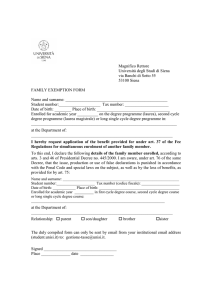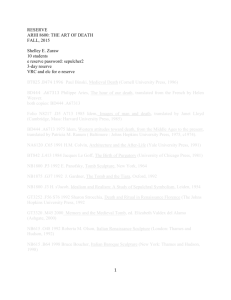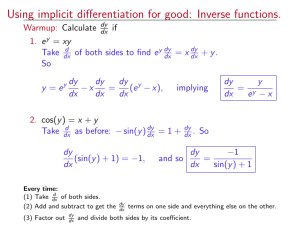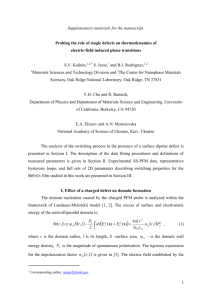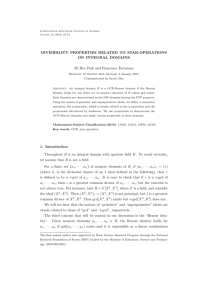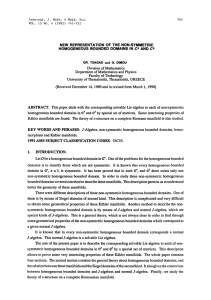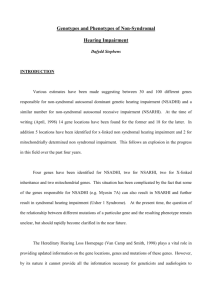Genomes and the structure of the protein universe
advertisement
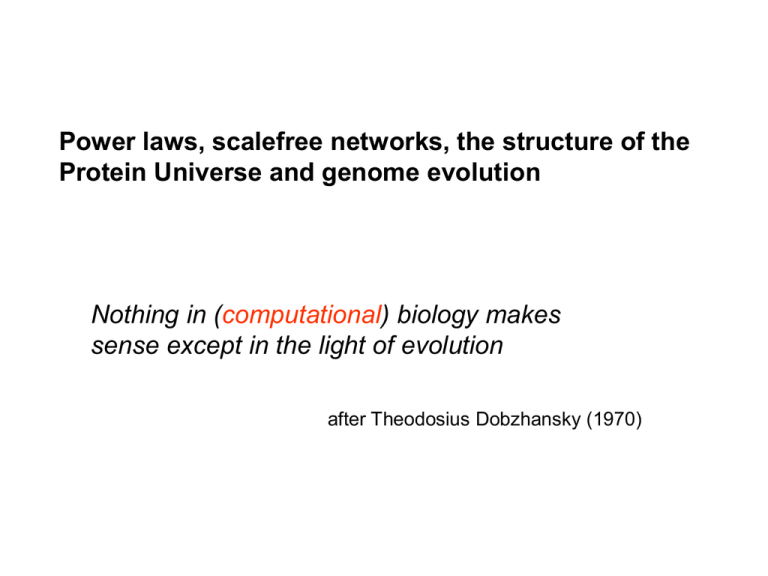
Power laws, scalefree networks, the structure of the Protein Universe and genome evolution Nothing in (computational) biology makes sense except in the light of evolution after Theodosius Dobzhansky (1970) The Protein Universe Total number of potential protein sequences - ~20200 Total number of existing protein sequences: 1010-1011 GenBank2002: ~106 What is the distribution of these sequences in the sequence and structure spaces? Hierarchical classification of proteins Category Example Definition, criteria, main features Structural class / Overall composition of structural elements. No evolutionary relationship. P-loop Topology of the folded protein backbone. Monophyletic origin? Superfamily P-loop containing nucleotide triphosphate hydrolases Recognizable sequence similarity (at least a conserved motif); conservation of basic biochemical properties. Monophyletic origin; Family Nucleotide and nucleoside kinases Significant sequence similarity; conservation of biochemical function. Adenylate kinase Orthologous relationships within the given set of species; conservation of the biological function. DR0202, DR0494 and DR2273 in D. radiodurans Paralogs originating from a lineage-specific duplication Fold Group of orthologs (COG) Lineagespecific expansion 200 no. of folds 150 100 50 0 1 2 3 4 5 6 7 8 9 10 families per fold The distribution of folds by the number of families in the protein structural database (PDB). There are many folds with 1-3 families but only a few folds with numerous families Altogether, there might be as many as 5,000-10,000 folds but >90% of the families belong to <1,000 common folds Mapping the Protein Universe is feasible! Thermotoga maritima Size distributions of domain families in two genomes - 2-log plot C. elegans The size distributions of folds and families are approximated by a power law: f(i) ~ i-k (k ~1-3) Power laws describe distributions of a number of quantities in biological and other contexts, e.g., the node degrees (number of connections) in metabolic and protein interactions networks, the Internet and social networks, citations of scientific papers, population of cities, personal wealth… Networks described by power laws are known as scale-free - they look the same at different scales. The existence of a small number of highly connected nodes (hubs) in scalefree networks determines their small-world properties and error tolerance Scale-free networks evolve through preferential attachment: the rich get richer or the fit get fitter Domain accretion in the evolution of orthologous sets of eukaryotic genes C1 C 2 C3 C1 C 2 C3 C1 C 2 C3 C1 C 2 Zk Zk Ub Zk Yeasts Br Br Zk Br Br Br C. elegans A. thaliana D. melanogaster Distribution of proteins by the number of domains follows is exponential! (if repeats do not count) However, we get a power law if repeats are included Domain connectivity network The domain connectivity graph is roughly approximated by a power law Evolution of protein domain families in genomes can be described by simple models which involve domain birth, death and innovation (“invention”) as elementary events BDIM: elementary events Birth Death Innovation BDIM – Birth, Death and Innovation Model BDIM: the layout of the model domain per-family birth rate domain innovation rate family family n d1 1 d1 l1 l2 l3 d2 d3 d4 2 d2 3 d3 … li-1 li di di+1 i di per-family death rate size class number of families in a size class maximum number of domains in a family lN-1 … dN N dN BDIM:ratethe basic equations innovation (instead of of change for d i "class 0" birth) Gain: birth in class i-1 df1(t)/dt = n-d1f1-l1f1+d2f2 … Loss: birth in class i dfi(t)/dt = li-1fi-1-difi-lifi+di+1fi+1 … dfN(t)/dt = lN-1fN-1-dNfN Gain: death in class i+1 no birth into and death from class N+1 Loss: death in class i N F(t) = fi(t) i 1 - the total number of families Power Approximation vs Power Asymptote under the linear BDIM asymptote (k = a-b-1) 1000 100 10 1 1 0.1 0.01 0.001 10 Linear BDIM 100 1000 10000 approximation Linear BDIM: Size Does Matter? li/i = l(1+a1/i) per domain birth rate di/i = d(1+b1/i) per domain death rate li/i di/i i Family size Conclusions I. The world, including biology, is full of power law distributions and scalefree networks I. The emergence of these seems to be explained by relatively simple evolutionary models Tomorrow?? Genomics today “There are two kinds of science: physics and stamp collection” Attributed to Ernest Rutherford
